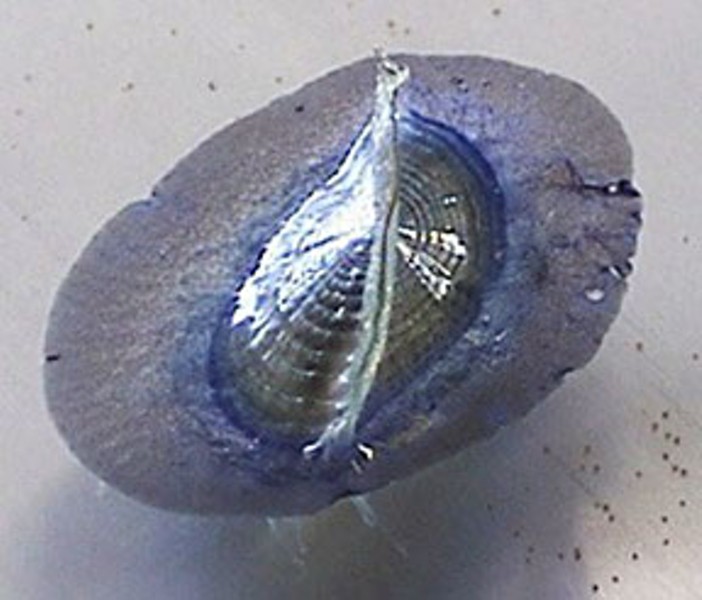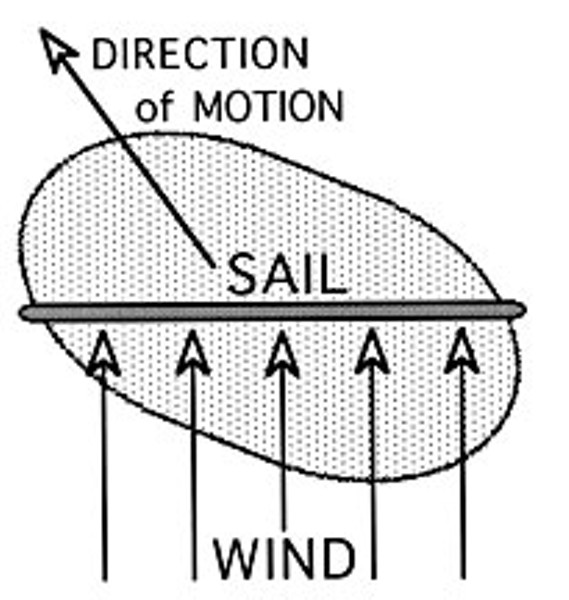Sailing is an ancient enterprise. Humans used the wind to cross the oceans thousands of years ago. Sails, however, existed 350 million years before humans hoisted theirs. The jellyfish Velella, several centimeters long, sails warm oceans to feed upon pelagic organisms which it captures with stinging tentacles a few centimeters long. Fortunately, their nematocysts (see "Garlick's Notebook," Nov. 15, 2007) are usually too short to penetrate human skin. Strong winds from the north often strand millions of these purple mariners on local beaches.
Velella's anatomy is depicted in the cross-section. The photo, courtesy of Curt Beebe, reveals its unique two-fold symmetry (180 degree rotations leave it unchanged). The absence of mirror symmetry means that the animal tends to sail at an angle to the wind because the sail tends to orient perpendicular to the wind. I floated a wood and plastic model, which I defined as left-handed, on a large puddle. It consistently sailed to the left of the down-wind direction. For winds from the south, left-handed Velella would safely move away from our coast. I have read that Velellas appearing on Chile's beaches are generally right-handed. This may be the only organism whose chiral anatomy (handedness) is influenced by the Coriolis Effect (see "Garlick's Notebook," Oct. 18, 2008).
For your appreciation, countless Velellas will be showing up soon on a beach near you. Will they all be left-handed?



Comments